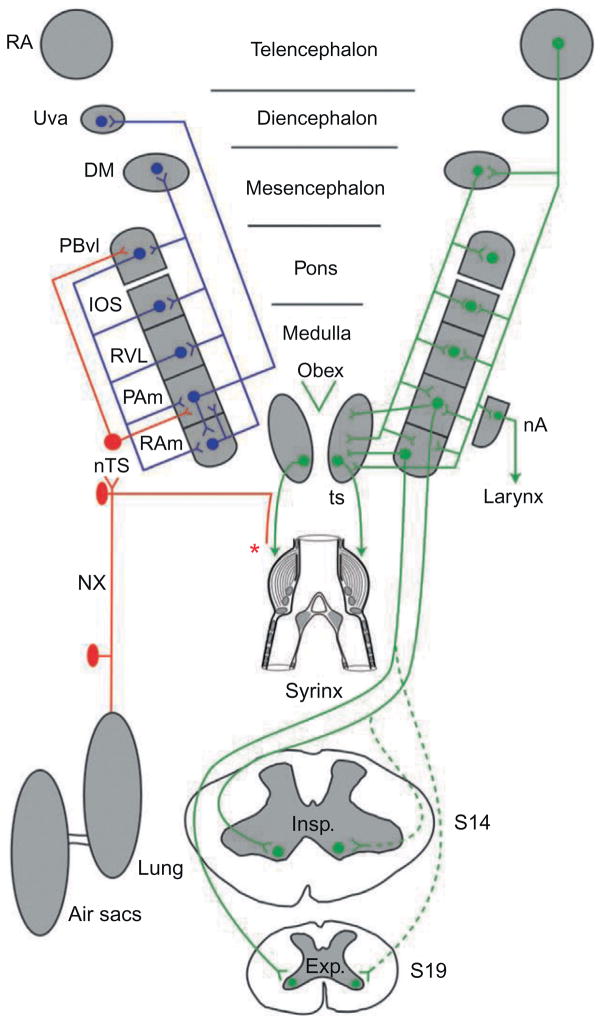FIGURE 5.
Nuclei and some of the interconnections of the respiratory-vocal system in a songbird. Abbreviations from top down: RA, robust nucleus of the arcopallium; Uva, nucleus uvaeformis; DM, dorsomedial nucleus of the intercollicular complex; PBvl, ventrolateral part of the parabrachial nucleus; IOS, nucleus infra-olivarus superior; RVL, ventrolateral nucleus of the rostral medulla; PAm, nucleus parambigualis; nTS, nucleus of the solitary tract; nA, nucleus ambiguus; RAm, nucleus retroambigualis; XIIts, tracheosyringeal part of the hypoglossal nucleus; ts, tracheosyringeal nerve; NX, cranial nerve X (vagus); Insp, inspiratory motoneurons at the level of spinal cord segment 14 (lower brachial); Exp, expiratory motoneurons at the level of spinal cord segment 19 (lower thoracic). Expiratory and inspiratory motoneurons receive predominantly contralateral projections from RAm and PAm, respectively—indicated by solid lines. Dots represent cell bodies and inverted arrowheads terminations. The two sides are symmetrical, of course, but for clarity the projections of RA and DM to all the nuclei of the ventrolateral pons and medulla, as well as to XIIts, are shown on the right, and the cascade of descending projections is shown on the left, as are the ascending recurrent pathways from RAm and Pam, these being predominantly ipsilateral. Note the sensory input from the lungs, air sacs and syrinx that reaches nTS, and hence PAm and Uva. The specific origin/type of syringeal afferents (illustrated by the asterisk) is presently unknown.
Figure modified from Wild (2008).

